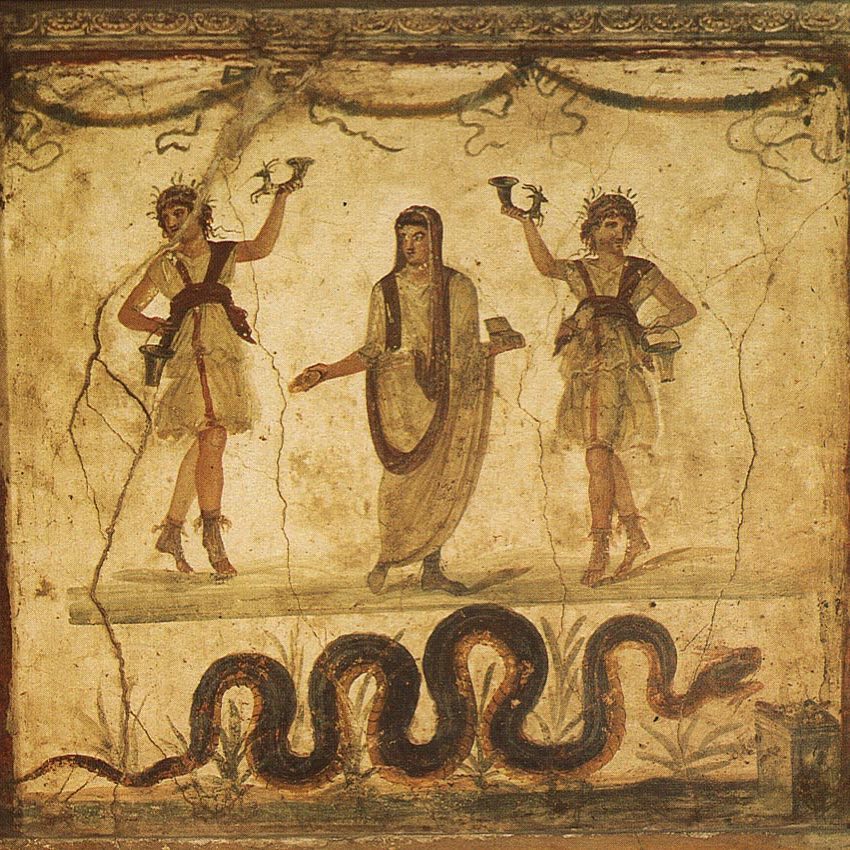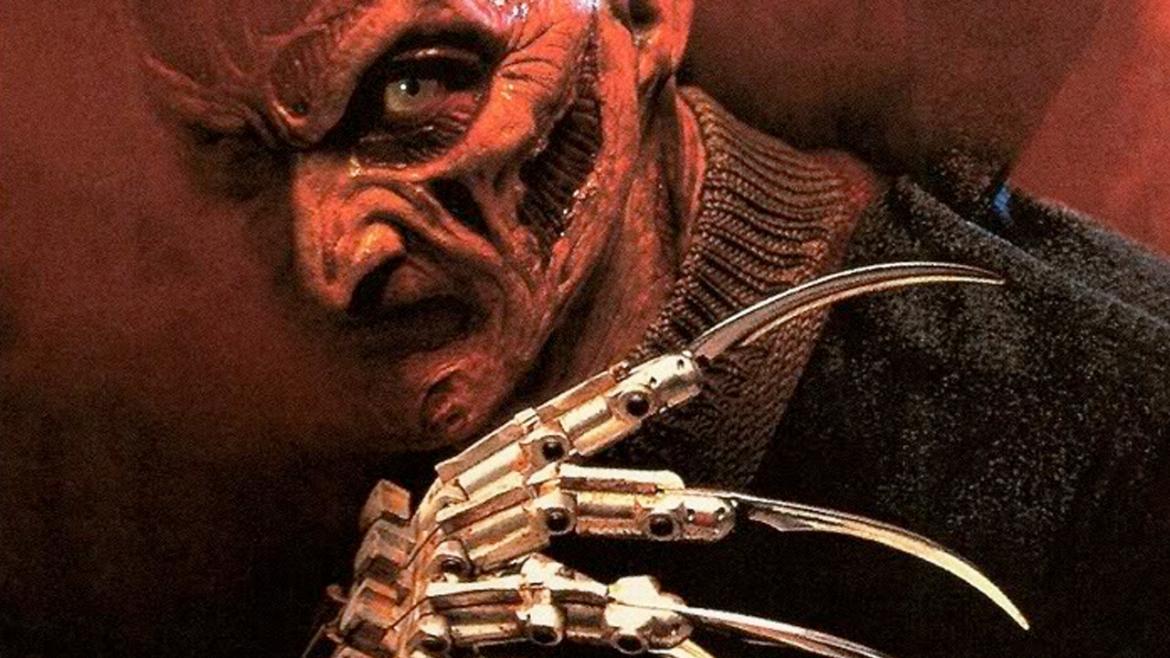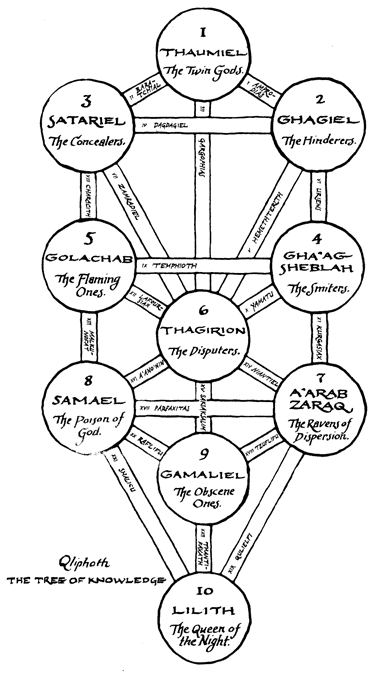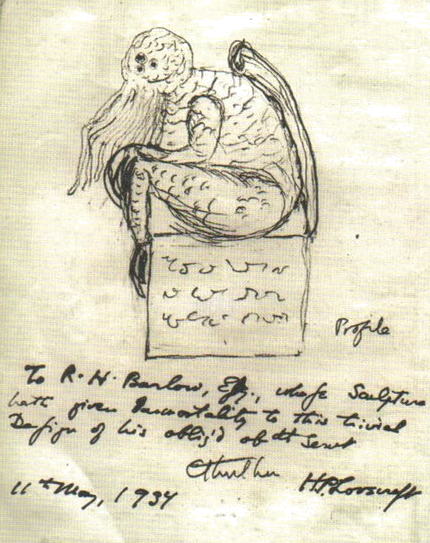Why I refer to evil spirits as qliphoth rather than “demons,” and why I don’t recommend messing with them.

The word qliphoth comes from the Hebrew kellipot (“shells”). In Kabbalah (a tradition of Jewish mysticism), the kellipot aren’t necessarily “evil,” but can be good or bad depending on the context. But in Hermetic Qabalah (the European version of Kabbalah), they are considered to be the astral “shells” of beings that used to exist, but which have long since been destroyed. Soulless and bodiless, these vampiric entities do whatever they can to intrude upon our reality and feed on the psychological traumas of the living. Many of them are completely evil by any definition of the term, and should be avoided at all cost. The singular form of qliphoth is qlipha, and it is more or less equivalent to the term “demon” in our modern vernacular. In a Hermetic context at least, qliphoth are malevolent ghosts that are dangerous for the living to engage with, and which must be execrated whenever they are encountered.
I refer to evil spirits as qliphoth because I feel the word demon has become too culturally loaded. In the original Greek, a daimon is virtually any spirit that exists somewhere between Gods and human beings. This is a very wide spectrum that includes everything from ghosts and angels to nymphs and satyrs. Therefore, daimon (or daemon, the Latin equivalent) is a morally neutral term that has nothing to do with whether a paranormal entity is “good” or “evil.” In fact, the Greeks distinguished between “good demons” (agathodaimones) and “bad demons” (kakodaimones) until Christians came along and appropriated the label for their own use. The only reason demon came to mean “evil spirit” is because Christians applied it to spirits that didn’t submit to Yahweh’s authority—including not only the fallen angels of Christian myth, but all “Gentile” (i.e., Pagan) divinities as well. Hence why so many medieval grimoires refer to such “demons” as Ammon (a corruption of the Egyptian god Amun), Astaroth (a corruption of the Akkadian Ishtar/Astarte), and Bael (a corruption of the Phoenician Ba’al Hadad).

A Pompeian fresco from the Casa dei Vetti (“House of the Vetti”), featuring
an agathodaimon represented as a snake (circa 63–79 CE).
So when we discuss demonology, what are we actually discussing? Are we really talking about evil spirits, or are we just talking about someone else’s Gods? There are still Hellenic Pagans who invoke and make offerings to certain daimones today, and there is also a religion called Demonolatry, in which people worship Pagan Gods who were demonized in the Bible. The important thing to understand about both of these groups is that when they discuss “worshiping demons,” they are not claiming to revere evil spirits. They are simply using the word demon in a Pagan context, rather than a Christian one.
Even spirits that do hurt people aren’t necessarily “evil” through and through. Some are provoked into hurting people; consider Goetia, in which the magician evokes the spirits and binds them to his or her will. This involves hurling abusive insults at the spirits and bossing them around while standing within a protective circle. The idea is that the spirits might tear the magician apart if she is foolish enough to step outside the circle; but given how they are treated in such procedures, can anyone really blame them? It’s an entirely different matter when a spirit harms people simply because it can. We can debate all day as to why it does what it does, but for all practical intents and purposes, it’s just evil. The only appropriate way to interact with such an entity is to avoid and/or execrate it accordingly.
I reserve the term qliphoth for spirits that are specifically characterized as evil in their own lore, and that have always been considered evil for as long as we’ve known about them. For example, figures like Astaroth and Bael don’t count, for they are simply Pagan Gods who’ve been demonized. But beings like Anzu, Lamia, and Zahhak were considered evil even by Pagans in pre-biblical times. This is an indicator that such entities are extremely dangerous and should never be invoked or worshiped by anyone.
Where do the qliphoth come from? You might recall that in Egyptian ontology, there is a difference between the ba or soul and the ka or spirit. Let’s say there’s this guy named Freddy who really enjoys hurting people as much as he can. Then Freddy dies, and Anubis comes and takes his soul to the Otherworld for the Weighing of the Heart, while Freddy’s spirit remains here on Earth as a ghost. Once in Duat, Freddy’s heart is weighed and is found completely unworthy of the afterlife; so Anubis feeds it to Ammut, the Devourer of Hearts, and Freddy ceases to exist. Yet his ghost is still lingering down here on Earth, and since no one likes him enough to remember him or visit his grave, the ghost is in danger of fading away forever. Perhaps it might learn to perpetuate itself by tormenting the living and feeding on the bioelectrical energy they release when they are terrified. Perhaps it will realize children are its most suitable victims, since they are more vulnerable to astral attack than most adults. If and when this happens, Freddy’s ghost becomes a qlipha and will continue tormenting the living until someone forces it to stop.

Screw you, Krueger!
Qliphoth don’t always understand what they are doing; as Stephen King once wrote in his 1996 novel, Desperation: “Evil is both fragile and stupid, dying soon after the ecosystem it’s poisoned.” Whether they are fully cognizant or not, all qliphoth serve the Serpent and do its bidding. The Serpent’s ultimate goal is to un-create everything the Gods have made (including the Gods themselves); but it will also settle for un-creating little things whenever it can, such as an individual soul. This is precisely what happens when a human being is reduced to an astral fragment of him or herself after death. The more people dehumanize each other, the more likely it is they will lose their souls; the more souls that are lost, the more likely it is that we will become qliphoth when we die; and the more qliphoth that come into existence, the more minions the Serpent has to help it ruin more souls (and create more qliphoth).
There are some traditions in which people “work with” the qliphoth, or even worship them outright. Kenneth Grant developed a system of ceremonial magic based on this premise, and the Simon Necronomicon is loaded with qliphothic “traps” that can backfire on unwary dabblers. (Check out David Harms’ and John Wisdom Gonce III’s The Necronomicon Files for some more background on this particular tangent.) Grant knew how dangerous his work with the qliphoth was, so he took steps to limit who could access it. (You’d have to be a Gods-damn Wall Street tycoon to even buy one of Grant’s books, which are all out of print and exceedingly overpriced.) The Necronomicon guys, on the other hand, made their material available to everyone, and for less than $10 to boot. Thanks to them, we now live in an age when any asscracker can go around opening qliphothic wormholes, letting Set knows what slither into our world. I’m not in the business of telling others what to do with their souls, but I would strongly recommend against playing around with this stuff (unless you actually want to drive yourself crazy and become possessed).1
![]()
The Simon Necronomicon (Avon Books, 1977).
One thing Kenneth Grant and “Simon” had in common was their shared belief that H.P. Lovecraft was actually a “sleeping prophet.” They thought the monsters in Lovecraft’s fiction are very real entities that exist in some other dimension, which Lovecraft supposedly visited through his dreams. I’m willing to concede that some Lovecraftian occultists, at least, are really contacting spiritual beings of some kind. I don’t believe for one second that fictional characters like Cthulhu or Nyarlathotep are real; but I do believe that if you invoke “Cthulhu” in a ritual, someone or something might choose to answer you by that name. If you’re lucky, it will be a God or a benevolent daemon of some sort; if you’re unlucky, it will be a qlipha that wants to skull-fuck you six ways from Sunday. We can be fairly confident that when you invoke a God like Set, whose name has been used for centuries, you will get the real Set and not an imposter. But a name like Cthulhu is still too new and fresh for it to consistently “belong” to any particular spiritual entity, so there’s just no telling what might answer you if you use it. You could be blessed by some Mesopotamian Goddess, or you could end up tormented by an aqrabuamelu scorpion-man for the rest of your life.
This tendency to create religions around fictional characters is not always so disturbing. It might seem a little weird if someone chooses to worship Batman or Wonder Woman, but at least these are good role models for people to emulate, if that is what they wish to do. But I have never understood why anyone would want to worship something like Cthulhu or the Slender Man. These are monsters no one in their right mind would ever want to meet in real life, so honoring them just makes no sense. And as I explained above, invoking such figures can open your soul to forces you shouldn’t be trifling with. In the LV-426 Tradition, we refer to this phenomenon as “the Sutter Cane Effect” (in reference to the main antagonist in John Carpenter’s 1994 film, In the Mouth of Madness). Unlike the Buddhist concept of tulpas (in which people create paranormal beings with their own psychic energy), the Cane Effect is what happens when qliphoth impersonate fictional characters, making them seem to become “real.” I don’t think this is really an issue with characters like Batman or Wonder Woman, who are too strongly identified with things like justice and mercy to become qliphothic avatars. It seems to me that qliphoth more readily attach themselves to characters that reflect their true dispositions, like Yog-Sothoth or Hedorah the Smog Monster.

The “Tree of Death” in Hermetic Qabalah.
Some occultists believe it is necessary to work with the qliphoth in order to develop a full understanding of the spirit world; they argue that by avoiding these entities, one is “ignoring one side of a two-sided coin.” I applaud anyone who, like Kenneth Grant, can do this while keeping all that qliphothic energy they are drawing to themselves under control. But with all due respect to Grant, most people are incapable of doing this and would only succeed in getting themselves possessed or killed if they tried. There are other ways to liberate and enlighten your soul than by trying to corral a bunch of invisible, rabid-ass baboons. In LV-426, we reject this notion of engaging with any Lovecraftian monsters at all, unless it is to execrate them and send them screaming back to the void. We take Set’s role as the Champion of Ra very seriously, and we are each committed to resisting the Serpent and its agents in as many ways as we can.

A sketch H.P. Lovecraft drew of his monster, Cthulhu, in 1934.
1 The Simon Necronomicon instructs its readers to attempt astral travel without taking any of the normal precautions (e.g., banishings). It also requires you to invoke an entity called “the Watcher,” which is supposed to “protect” your body while you go off exploring other worlds in spirit form. This Watcher has a carnivorous appetite and will supposedly kill you if you don’t keep it well-fed with all the proper sacrifices. To make things even worse, the book also implores practitioners to recite Sumerian “incantations” that actually translate into execrations of the Gods. So in effect, Necronomicon enthusiasts are putting themselves under the protection of evil spirits while also telling the good spirits to fuck off. This is rather like asking a serial killer to watch over you while you sleep, then smashing your phone so you can’t dial 911.
